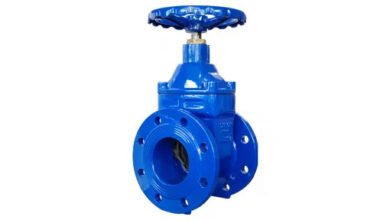What is the Best Way to Select an Actuator for a Valve? Pneumatic Vs. Electric

In the process industry, engineers and technicians strive to make systems more efficient and productive. On a daily basis, they must decide what kind of equipment to use. In the process control industry, valve automation plays a huge role. Since there are many valve actuator manufacturers to choose from, it may not always be easy to select the most economical and technically sound option. An evaluation of performance, cost, productivity, and safety is necessary before choosing pneumatic or electric actuators. There are advantages and disadvantages to each type of valve actuator. When deciding how to automate a valve, the following factors are usually considered:
Electric Actuators |
Pneumatic Actuators |
|
Power sourceIn selecting an actuator type, the first and foremost consideration is what power source will be most effective, which is determined mainly by the power source availability. |
The high efficiency of electric power supplies results in much lower total power consumption than pneumatic actuators. | An electrically driven compressor usually supplies pneumatic pressure in combination with pressurized air.
⇒ Need larger infrastructure – Compressor – Electric power – Airlines |
Torque outputThe torque output should be tailored to the line size and the valve’s CV (flow coefficient). The CV is calculated based on the input and output pressure, temperature, medium, and flow. For help determining the CV value, you can use this valve calculator. |
Actuators that are less powerful than pneumatic actuators | Hydraulic actuators provide more force than any other actuator technology |
Speed of OperationA valve’s speed is measured by how fast it rotates and how long it takes to close after opening. |
High speeds are possible.
Gearing converts the rotary motion of the motor into valve movement in electric actuators. A faster valve operation, therefore, is associated with lower torque outputs unless the motor is and changed (entirely new actuator). |
at High speeds are possible.
Speed and force can be adjusted independently and are easily adjustable |
Plant Environment & Location |
Hazardous Location – Providing explosion-proof actuators for hazardous or harsh environments (Pneumatic actuators are more commonly used in hazardous locations, but if compressed air is not available or pneumatic actuators cannot provide the operating characteristics required, an explosion-proof classified electric actuator can be used).
Location of valve that is inaccessible or remote (electric actuators would be preferable in this case since they require less maintenance than pneumatic actuators) Temperature range: Both electric and pneumatic actuators can be used in a wide range of temperatures |
|
Size of ActuatorAs system requirements become more strict, this is becoming increasingly important. |
A constant stream of new developments for compact, yet powerful electric actuators. Automation systems will become simpler, lighter, and more efficient as a result | To achieve the same torque output and performance standards, pneumatic actuators are much bigger and bulkier than electric actuators |
Lifetime costsIt is important to consider both the cost per unit and the costs associated with maintenance and operation. |
High initial per-unit cost
Low maintenance cost Low operating cost |
A Low per-unit cost
High maintenance cost A high operating cost (pneumatic actuators continually draw energy from system leakage and positioned bleed |
Purpose |
Modulation – Precision applications using multi-turn actuators. In multi-turn valves, electric actuators are preferred over pneumatics because they are more precise.
On/Off – For opening and closing the valve in 90-degree or 180-degree increments. It is equally suitable to use electric and pneumatic actuators. |
|
ControlThe control method is mainly determined by the actuator’s purpose (modulating versus on/off). The integration of the equipment with any existing equipment and the options available at the installation sites are a secondary considerations. |
4-20 mA control signal: Analog signals are the most popular and widely used. Modulation, precision, and proportional control.
TTL Control: On/off control, is one of the earliest logic standards that are widely available and compatible. Modbus control: Serial lines are used to transmit data between devices. Both on/off and modulating control is possible, and it is open-source. |
|
SafetyDuring a power outage or system failure, valves remain open, closed, or in their last position |
Manufacturers of electric actuators are continuously developing reliable fail-safe options.
Fail-safe actuators are not as well known as pneumatic ones. |
There is a wide range of pneumatic fail-safe actuators available |
Technical Support |
When purchasing products for new systems, people often overlook the importance of having readily available, efficient, and effective technical support. In the long run, finding a manufacturer who offers great technical support will save you time, money, and stress. | |
Points to take away from pneumatic vs. electric actuators:
Pneumatic Actuators:
It is practical to use a pneumatic actuator with an air pressure supply of 40 to 120 psi (3 to 8 bar). Pneumatic actuators provide high force and speed at a low unit cost. It is easy to adjust the force and speed, and they are independent of one another.
Despite the low cost of pneumatic components, maintenance and operating costs can be high, especially if a serious effort has not been made to quantify and minimize them. Replacement cylinders, installation and maintenance of airlines, and electricity for the compressor are all included in maintenance and operating costs.
Electric Actuators:
The power supply for electric actuators is usually 12-24 VDC or 110-240 VAC. Electric actuators provide precise control and positioning of valves and can help machines adapt to flexible processes. In electric actuators, speed and torque are often related because of the way they work, meaning that torque is sacrificed for speed, and vice versa. There is an important difference between pneumatic cylinders and hydraulic cylinders. Also, electric actuators are quieter during operation, so they will reduce production line noise.
Electric actuators are often deterred by their high initial costs. Savings that will result in low operating and maintenance costs compared to pneumatic actuators are rarely consider. A comparison between electric actuators and pneumatic actuators shows that the annual cost of electric actuators is comparable to that of pneumatic actuators.
Cair Euromatic Automation is a well-known electric actuator manufacturers in India. We offer a vast range of electrical actuators for rotational and linear motion.
Also, read Types of Industrial Ball Valves & Designs




